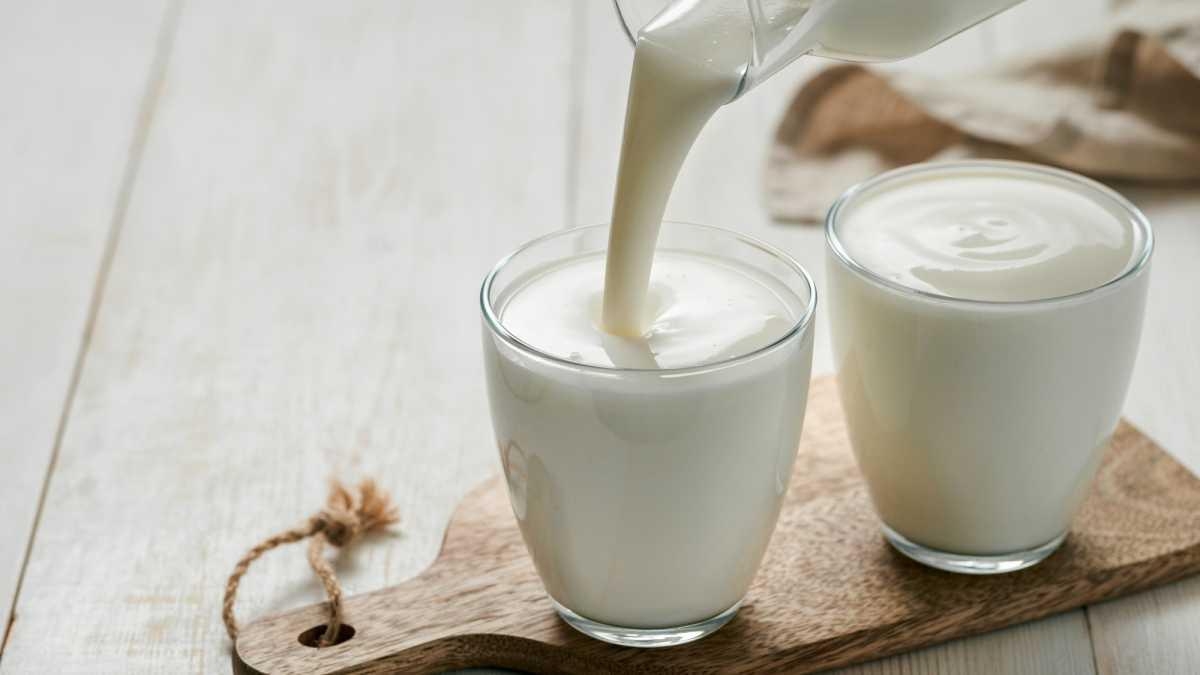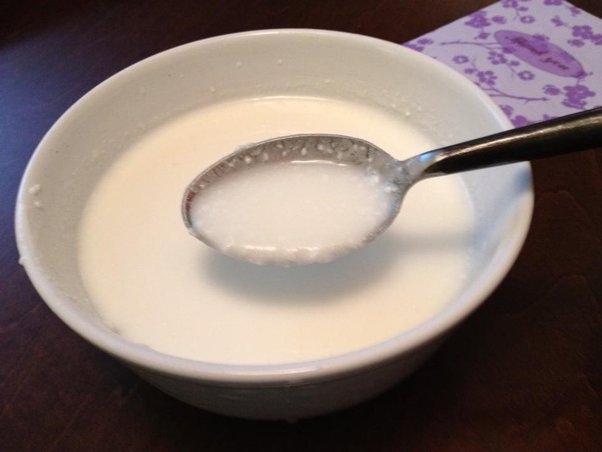Explaining the chunks in milk but not expired phenomenon
Have you ever poured a glass of milk, only to find small chunks floating in it, despite the fact that it’s not expired? It’s a phenomenon that has left many people scratching their heads.
Milk is a staple in many households, and it’s a great source of calcium and other important nutrients. However, sometimes it can be a bit confusing when it comes to understanding the different textures and consistencies that it can have.
If you’ve ever wondered what causes the chunks in milk but not expired phenomenon, you’re not alone. In this article, we’ll explore the science behind this strange occurrence and explain why it happens. Whether you’re a milk lover or just curious about the science behind everyday phenomena, you won’t want to miss this explanation.
What is Milk?
Milk is a nutritious liquid produced by the mammary glands of mammals, typically cows, goats, and sheep. It is nature’s way of providing essential nutrients to their young ones. Milk is considered a complete food, which means it contains almost all the nutrients required for sustained life. It is an excellent source of protein, vitamins, and minerals. The most common types of milk available in the market are whole milk, low or reduced-fat milk, skim milk, and flavored milk.

Milk is a perishable commodity that requires special handling and storage to prevent spoilage. Fresh milk has a shelf life of about 5-7 days when stored at a temperature between 1-5°C. However, the shelf life can be extended by pasteurization, which involves heating the raw milk to kill bacteria and other microorganisms that cause spoilage. The pasteurized milk can last up to two weeks when refrigerated. Other methods of milk preservation include freezing or drying.
What Causes Milk to Clump and Not Expired?
Milk is a popular dairy product consumed by millions of people worldwide. It is a nutrient-dense beverage that provides several essential nutrients, including calcium, vitamin D, and protein, among others. However, as with any perishable food item, milk has a limited shelf life, which can vary depending on several factors.
One common phenomenon that occurs with milk is clumping, which can happen regardless if the milk is still fresh or already expired. In this article, we will explore the reasons behind milk clumping and how it is not necessarily a sign of expired milk.
Milk is composed of water, fats, carbohydrates, and proteins. The proteins in milk are called caseins, which are responsible for the white color and opaque appearance of the milk. These proteins are structurally organized as tiny spheres called casein micelles, which are held together by calcium ions. When milk is stored, these micelles can break down, leading to the formation of curds or lumps. This process, known as clotting, is what causes milk clumps. It can happen with any type of milk, including fresh milk, UHT milk, and even milk that has been previously frozen.
It is crucial to note that clumping is not a confirmation of spoiled milk. In fact, milk clumps can be attributed to several reasons, including fluctuations in temperature, agitation during transport or storage, or exposure to certain enzymes.
Additionally, some people experience milk clumping due to the physical activity of their digestive system. Studies suggest that drinking cold milk can cause an increase in heart rate and physical fitness activity, which can promote the breaking down of micelles in the stomach. Therefore, if you notice clumps in your milk, it does not necessarily imply that the milk is unsafe to drink. However, if the milk smells sour or rancid, has an off taste, or is past the expiration date, it is best to dispose of it.
Shelf Life of Milk
Milk is a popular beverage consumed by people all over the world. It is a great source of several essential nutrients, including calcium, vitamin D, and protein. However, due to its perishable nature, milk has a limited shelf life. The shelf life of milk depends on several factors, including the temperature at which it is stored, the processing method used to produce it, and its fat content.
Milk comes with a use-by date that indicates the period within which it can be safely consumed. The use-by date is determined by the milk’s processing method and its specific packaging. Milk that has gone past its use-by date should be discarded immediately, as it can pose a serious health risk. Spoiled milk can harbor harmful bacteria, such as E. coli and Salmonella, which can cause food poisoning if ingested. Proper handling and storage of milk can help extend its shelf life, ensuring that it remains safe for consumption for a longer period.
Safe Consumption of Milk
Milk is a staple in many households and is consumed by people of all ages. However, it is important to know the basics when it comes to consuming milk safely. First and foremost, check the expiration date of the milk to ensure it has not expired. Milk should be stored in the refrigerator at a temperature below 40°F to prevent spoilage. It is also important to avoid leaving milk out of the refrigerator for extended periods. If left out for too long, milk can become a breeding ground for bacteria that can cause illness.
Another factor to consider when consuming milk is the presence of chunks or curdles. While this may seem alarming, it is actually a natural phenomenon that occurs when milk proteins clump together. This is typically caused by a change in temperature or the introduction of an acidic substance, such as lemon juice. These chunks are safe to consume and can even be used in cooking and baking. However, if the milk has a sour or unpleasant odor, it is best to discard it. In general, following basic safety guidelines and storing milk properly can ensure safe consumption and prevent illness from spoiled milk.
Common Reasons for Clumping and Not Expiring Phenomenon
Milk is a staple in many households and has been enjoyed by people for centuries. However, one phenomenon that often puzzles many individuals is the sudden clumping of milk without it being expired. This can be a cause for concern for some individuals who may believe that their milk has gone bad, resulting in wasted milk and money. Clumps in milk can be caused by a variety of factors, including temperature, agitation, and the type of milk. Having a better understanding of the causes of clumping can help individuals differentiate between safe and unsafe milk.
One common reason why milk clumps is due to temperature changes. When milk is exposed to sudden temperature changes, such as going from cold to hot or hot to cold, it can cause the proteins in the milk to denature, leading to clumping. Another reason for milk to clump is due to agitation. When milk is vigorously stirred or shaken, it can cause the proteins in the milk to break down, resulting in clumping. Additionally, the type of milk can also determine the likelihood of it clumping. For example, the proteins in non-dairy milk alternatives such as almond milk and soy milk, are different from those found in cow’s milk, and may not clump as easily.
Types of Milk that Exhibit This Phenomenon
Milk is a staple in many households worldwide, and it comes in different types. From cow’s milk to goat’s milk, almond milk, soy milk, and oat milk, there is a type of milk for everyone. Each type of milk has its unique characteristics, including taste, nutrient content, and shelf life. However, one thing that all types of milk have in common is that they can exhibit the phenomenon of chunks, even when they are not yet expired.
When milk chunks, it is an indication that the protein molecules in the milk have started to bond together. This bonding results in the formation of clumps, which can make the milk thick and lumpy. Several factors can cause milk to chunk, such as exposure to high temperatures, certain bacterial strains, and the type of milk itself. For instance, milk with higher protein content is more likely to chunk than milk with lower protein content. Despite the presence of chunks, milk that is not expired is generally safe to consume, provided it has not been left at room temperature for too long.
Types of milk that exhibit the chunking phenomenon include cow’s milk, goat’s milk, and even plant-based milk like soy milk and almond milk. Cow’s milk is the most commonly consumed type of milk and also has the highest protein content. As such, it tends to chunk more often than other types of milk. Goat’s milk has slightly lower protein content than cow’s milk, making it less prone to chunking. Plant-based milk like soy milk and almond milk also have protein molecules that can bond together, leading to the formation of clumps. However, these alternative milk types have lower protein content than cow’s milk and are therefore less likely to experience chunking.
How to avoid Milk Chunks?
In order to avoid milk chunks, individuals may want to take certain precautions. For instance, when storing milk in the refrigerator, it is best to place the container near the back of the refrigerator where it is coldest.

This will prevent sudden temperature changes from causing the proteins in the milk to denature and form clumps. Similarly, when heating up milk in a microwave or on the stove, it is important to do so slowly and evenly in order to prevent the proteins from denaturing. Additionally, vigorous stirring or shaking of milk should be avoided, as this can also lead to clumping. Finally, selecting a type of milk with lower protein content may reduce the likelihood of chunks forming.
Meet Jaxon Monroe, the culinary enthusiast and food blogger who has taken the online cooking world by storm with his passion for experimenting with flavors. With a sharp eye for detail and an innate ability to create and present dishes in an appealing way, Jaxon’s blog is the go-to for any food lover seeking inspiration.
From BBQ chicken pizza bites to healthy Thai spiced salmon cakes, Jaxon’s recipes draw upon a range of cuisines and flavors, each as tantalizing as the last. But it’s not just about indulgence – Jaxon also shares tips and tricks to help readers improve their cooking skills.
Whether you’re an experienced cook or just starting out, Jaxon’s blog offers valuable insights and creative ideas that will leave you inspired in the kitchen. So why not join the thousands of readers who have already discovered the magic of Jaxon Monroe’s unique take on cooking?